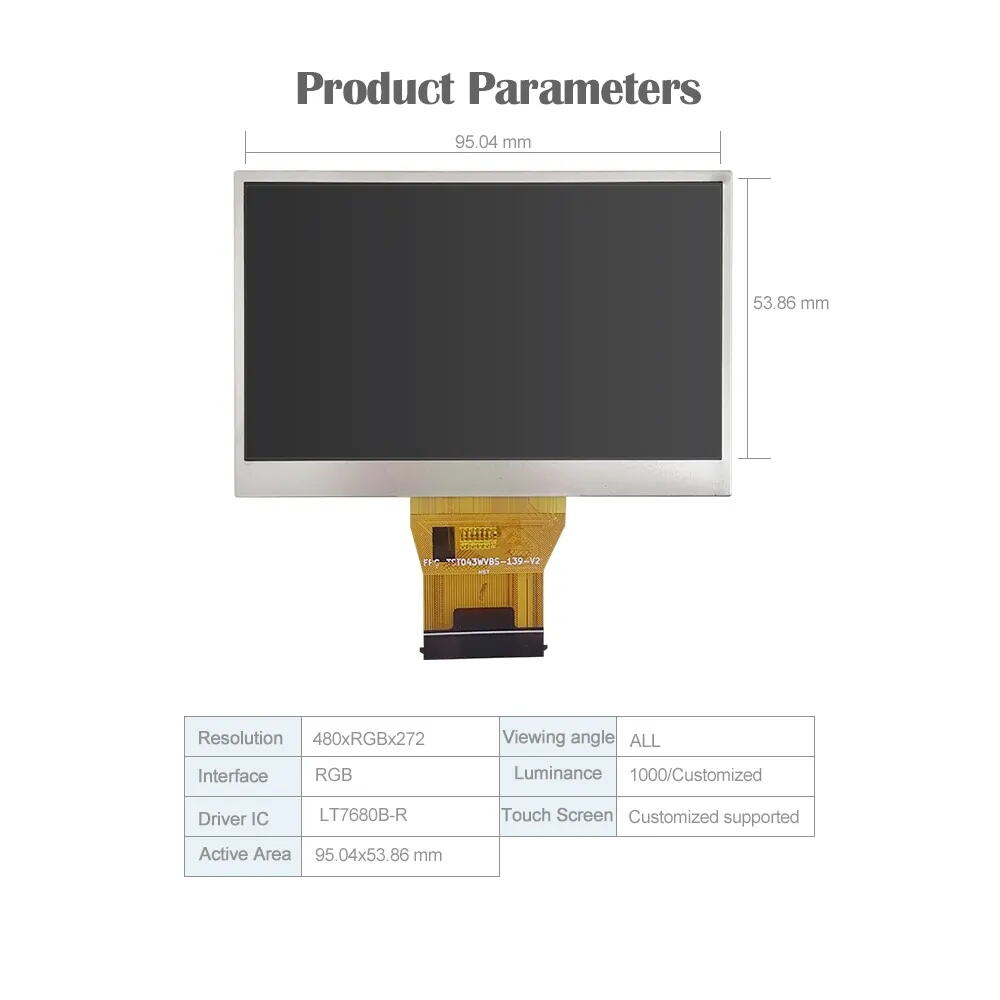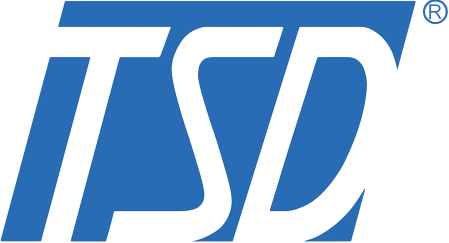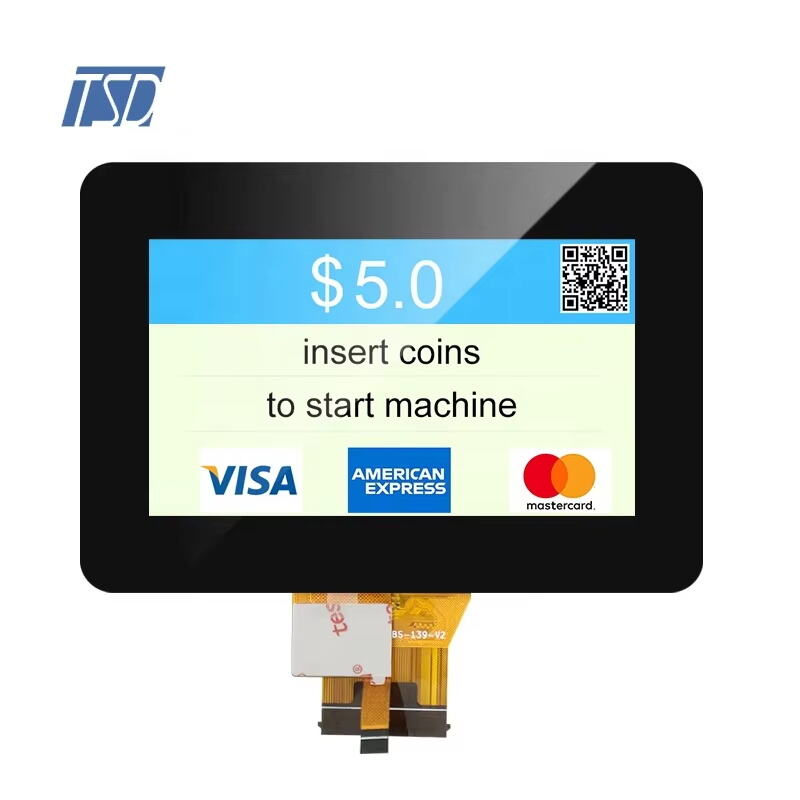Understanding Quality Control in TFT LCD Manufacturing
The success of any electronic display product heavily depends on the reliability and performance of its components, particularly the TFT LCD panel. TFT LCD suppliers play a crucial role in maintaining stringent quality standards throughout the manufacturing process. From raw material selection to final product testing, these suppliers implement comprehensive quality control measures to ensure every display meets or exceeds industry specifications.
In today's competitive market, TFT LCD suppliers must balance high-volume production with unwavering quality standards. This requires sophisticated quality management systems, advanced testing equipment, and highly trained personnel. The increasing demand for displays in automotive, medical, industrial, and consumer electronics sectors has made quality consistency more critical than ever.
Core Components of Quality Assurance
Raw Material Inspection and Testing
TFT LCD suppliers begin their quality control process at the very first stage - raw material selection. Each component, from liquid crystal materials to glass substrates, undergoes rigorous testing. Suppliers maintain strict specifications for material purity, optical properties, and physical characteristics. Advanced analytical instruments are used to verify material composition and identify any potential defects before production begins.
Documentation and traceability systems track each batch of materials throughout the supply chain. This allows suppliers to quickly identify and address any quality issues that may arise during production. Regular supplier audits and material certifications ensure consistent quality of incoming components.
Manufacturing Process Controls
During production, TFT LCD suppliers employ multiple layers of process controls. Automated inspection systems monitor critical parameters such as cell gap uniformity, pixel alignment, and color accuracy. Clean room environments are maintained at specific temperature, humidity, and particle count levels to prevent contamination.
Statistical process control (SPC) methods help identify trends and variations in production parameters. Real-time monitoring systems alert operators to any deviations from established specifications, allowing for immediate corrective actions. This proactive approach helps minimize defects and maintain consistent quality across production runs.

Advanced Testing and Verification Methods
Optical Performance Testing
TFT LCD suppliers utilize sophisticated testing equipment to evaluate display performance characteristics. These include luminance meters, colorimeters, and viewing angle measurement systems. Each display undergoes thorough testing for brightness, contrast ratio, color gamut, and response time. Automated optical inspection systems can detect even microscopic defects that might affect display quality.
Environmental chambers simulate various operating conditions to ensure displays maintain performance across specified temperature and humidity ranges. Accelerated life testing helps predict long-term reliability and identify potential failure modes before products reach customers.
Reliability and Durability Testing
Long-term reliability is verified through extensive stress testing. TFT LCD suppliers subject displays to thermal cycling, vibration testing, and mechanical shock tests. These evaluations help ensure products can withstand real-world operating conditions while maintaining consistent performance.
Additional tests may include exposure to UV radiation, moisture resistance, and electrical stress testing. The results help suppliers optimize their designs and manufacturing processes for maximum reliability. Detailed test reports provide customers with confidence in product durability.
Quality Management Systems and Certification
International Standards Compliance
Leading TFT LCD suppliers maintain certification to international quality standards such as ISO 9001 and IATF 16949 for automotive applications. These management systems provide structured frameworks for continuous quality improvement and process optimization. Regular internal and external audits verify compliance with standard requirements.
Industry-specific certifications demonstrate suppliers' commitment to meeting specialized quality requirements. This includes medical device standards, military specifications, or aviation requirements depending on the target market segment.
Documentation and Traceability
Comprehensive documentation systems track every aspect of the production process. TFT LCD suppliers maintain detailed records of material specifications, process parameters, test results, and quality metrics. This documentation enables root cause analysis of any quality issues and supports continuous improvement initiatives.
Product serialization and lot tracking systems provide complete traceability from raw materials through finished products. This capability is particularly important for applications requiring strict quality control and regulatory compliance.
Customer Support and Quality Feedback
Technical Support Services
TFT LCD suppliers provide extensive technical support to help customers optimize display integration and performance. Application engineers work closely with customers to address specific requirements and resolve any quality-related concerns. Regular technical reviews ensure products continue to meet evolving customer needs.
Suppliers often maintain demonstration facilities where customers can evaluate display performance under various conditions. This hands-on approach helps build confidence in product quality and supplier capabilities.
Continuous Improvement Programs
Customer feedback plays a vital role in quality improvement efforts. TFT LCD suppliers analyze warranty data, field returns, and customer satisfaction surveys to identify opportunities for enhancement. Regular quality review meetings with key customers help align improvement priorities with market requirements.
Supplier-led innovation programs focus on developing new technologies and processes to enhance product quality and reliability. This proactive approach helps suppliers stay ahead of evolving industry standards and customer expectations.
Frequently Asked Questions
What quality certifications should I look for in a TFT LCD supplier?
Look for suppliers with ISO 9001 certification as a minimum requirement. For automotive applications, IATF 16949 certification is essential. Additional industry-specific certifications may be required depending on your application needs.
How do suppliers ensure long-term reliability of TFT LCD displays?
Suppliers conduct extensive reliability testing including thermal cycling, vibration testing, and accelerated life testing. They also maintain detailed documentation and traceability systems to monitor product performance over time.
What types of quality testing do suppliers perform on TFT LCD displays?
Suppliers perform comprehensive testing including optical performance measurements, environmental testing, reliability verification, and durability assessments. Each display undergoes multiple inspection stages throughout the production process.
How do suppliers handle quality issues if they arise?
TFT LCD suppliers maintain robust quality management systems that include detailed problem-solving procedures, root cause analysis capabilities, and corrective action processes. They work closely with customers to quickly resolve any quality concerns and implement preventive measures.




